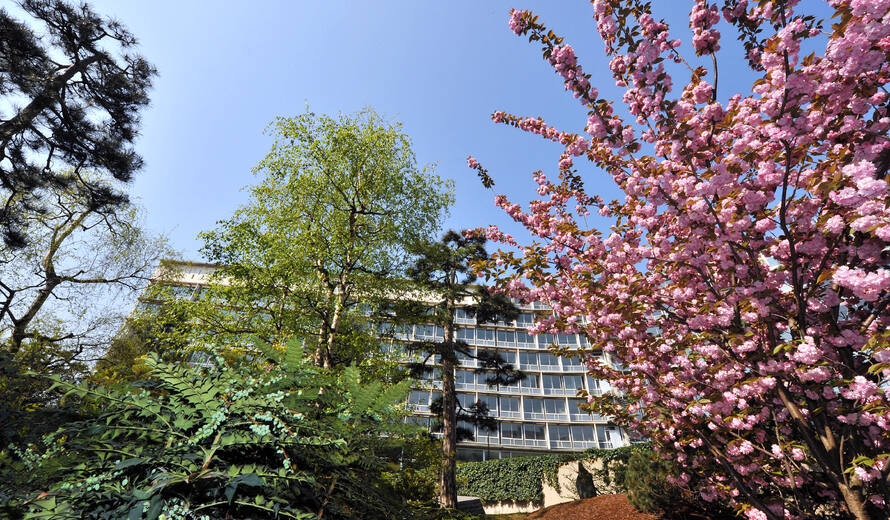Forty-two sites to be considered for inscription on UNESCO’s World Heritage List in June
Remarkable natural and cultural properties from 40 countries will be considered for inscription on UNESCO’s World Heritage List during the meeting of the World Heritage Committee in Paris (19 – 29 June).
Six of these countries stand to have properties inscribed on the World Heritage List for the first time during the forthcoming session: Barbados, Jamaica, Micronesia, Palau, Congo, and the United Arab Emirates.
Natural properties scheduled for consideration at the time of publication are: Ningaloo Coast (Australia); Pendjari National Park (Benin, an extension of W National Park of Niger); Wudalianchi National Park (China); Ancient Beech Forests of Germany (Germany, an extension of the Primeval Beech Forests of the Carpathians, Slovakia and Ukraine); Western Ghats (India); Harra Protected Area (Iran); Ogasawara Islands (Japan); Kenya Lake System in the Great Rift Valley; (Kenya); Trinational Sangha (Congo, Cameroon, Central African Republic) and the nomination under new criteria of the World Heritage property of Phong Nha – Ke Bang National Park (Viet Nam).
Three properties are proposed for both natural and cultural criteria as “mixed natural and cultural” sites. They are: Blue and John Crow Mountains National Park (Jamaica); Wadi Rum (Jordan); and Saloum Delta (Senegal).
The following cultural properties will be considered for inscription: Pearling, Testimony of an Island Economy (Bahrain); Bridgetown and its Garrison (Barbados); West Lake Cultural Landscape of Hangzhou (China); Coffee Cultural Landscape (Colombia); Konso Cultural Landscape (Ethiopia); The Causses and the Cévennes (France); The architectural work of Le Corbusier, an outstanding contribution to the Modern Movement (France, Argentina, Belgium, Germany, Japan, Switzerland); Fagus Factory in Alfeld (Germany); The Persian Garden (Iran); The Land of Caves and Hiding (Israel); The Triple-arch Gate at Dan (Israel); The Longobards in Italy, Places of Power, 568 - 774 A.D., (Italy); Hiraizumi – Temples, Gardens and Archaeological Sites Representing the Buddhist Pure Land (Japan); Fort Jesus, Mombasa (Kenya); Fundidora Monterre (Mexico); Transboundary Nomination for Yapese Stone Money Sites in Palau and Yap (Micronesia / Palau); Petroglyphic Complexes of the Mongolian Altai (Mongolia); León Cathedral (Nicaragua); Oke-Idanre Cultural Landscape (Nigeria); Historical City of Jeddah (Saudi Arabia); Cultural Landscape of the Serra de Tramuntana (Spain); Archaeological Sites of the Island of Meroe (Sudan); Prehistoric Pile dwellings around the Alps (Switzerland, Austria, France, Germany, Italy, Slovenia); Ancient villages of Northern Syria (Syrian Arab Republic); Old City and Ramparts of Alanya with Seljuk Shipyard (Turkey); Selimiye Mosque and its social Complex (Turkey); Residence of Bukovinian and Dalmatia Metropolitans (Ukraine); Cultural Sites of Al Ain: Hafit, Hili, Bidaa Bint Saud and Oases Areas (United Arab Emirates); Citadel of the Ho Dynasty (Viet Nam).
During the session, World Heritage Committee members will examine the state of conservation of 169 properties including the 34 sites inscribed on the List of World Heritage in Danger because of serious threats to their outstanding universal value.
The World Heritage Committee, responsible for the implementation of the World Heritage Convention, comprises representatives of 21 countries, elected by the States Parties of the World Heritage Convention for four years. Each year, the Committee adds new sites to the List.
New sites are proposed by States Parties. Applications are reviewed by two advisory bodies: cultural sites by the International Council on Monuments and Sites (ICOMOS), and natural sites by the International Union for Conservation of Nature (IUCN). The advisory bodies inform the Committee of their recommendations.
The World Heritage Committee also examines reports on the state of conservation of inscribed sites and asks States Parties to take appropriate conservation and preservation measures when necessary. The Committee supervises the disbursement of over $4 million annually from the World Heritage Fund, aimed, among other purposes, at emergency action, training of experts and encouraging technical cooperation. UNESCO’s World Heritage Centre is the Secretariat of the World Heritage Committee.
To date, the World Heritage List numbers 911 properties of “outstanding universal value,” including 704 cultural, 180 natural and 27 mixed properties in 151 States Parties. The World Heritage Convention has been ratified by 187 States Parties to date.
The debates of the World Heritage Committee are not open to the press but accredited journalists will be able to come attend the opening of the session and regular press briefings that will be held during the event.
